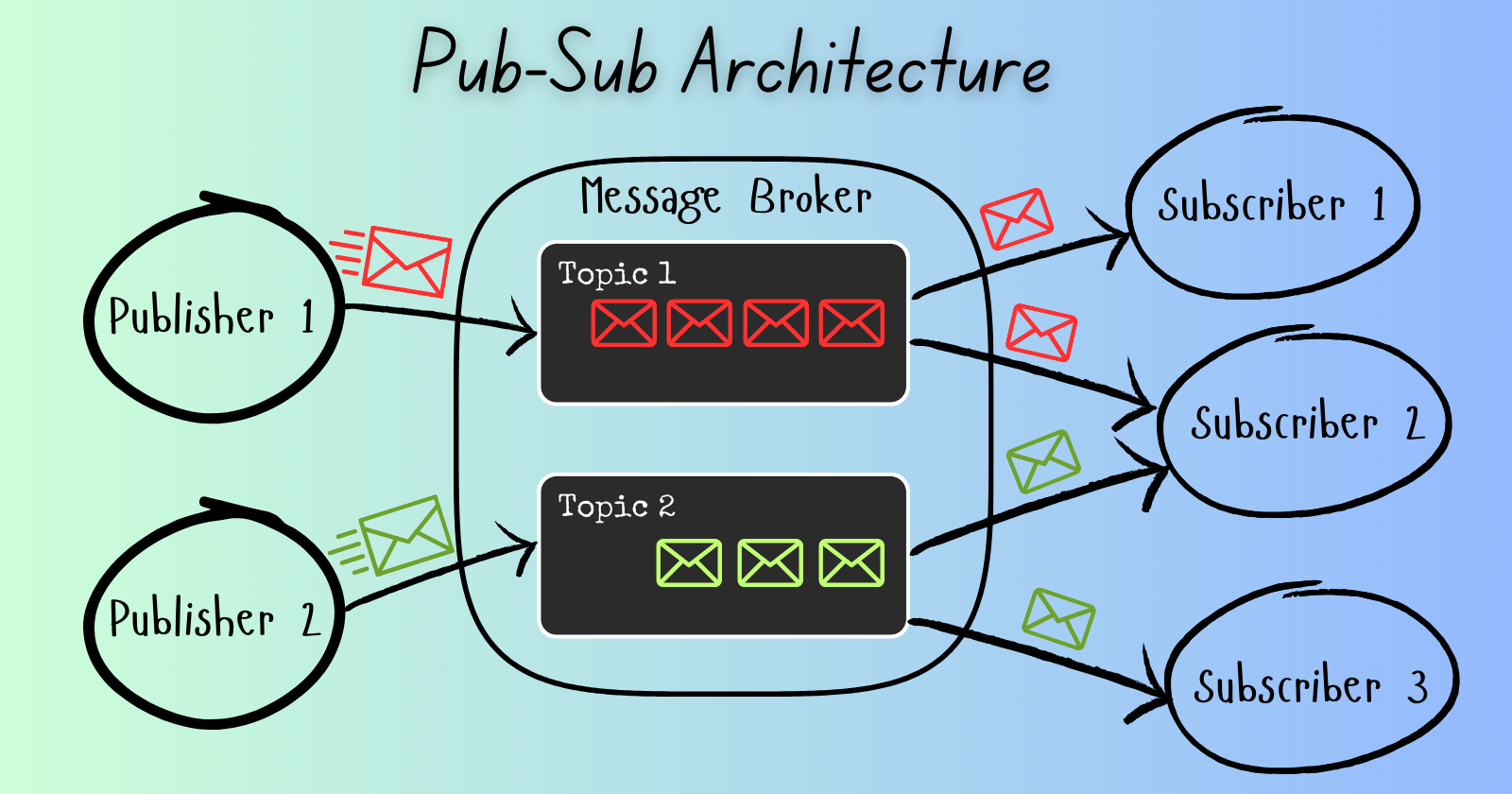Publish-Subscribe (Pub-Sub) Model of Messaging
 Sandeep Choudhary
Sandeep Choudhary
Introduction
The pub-sub model is a messaging paradigm that is widely used in distributed systems. It is a pattern that provides a framework for exchanging messages between publishers and subscribers. This model is particularly effective in situations where the sender (publisher) and receiver (subscriber) of messages are not directly connected.
Understanding the Model
In the pub-sub model, publishers produce messages and subscribers consume them. The key aspect of this model is that publishers and subscribers are not aware of each other’s existence. The connection between them is managed by a message broker or event bus.
Publishers send messages to a topic or channel on the broker, and subscribers receive messages by subscribing to these topics. When a message is published to a topic, it is automatically forwarded to all subscribers of that topic.
Key components of a Pub-Sub system include:
Publisher: The entity that sends the messages.
Subscriber: The entity that receives the messages.
Topic: A category that subscribers can subscribe to.
Message: The data published to the topic.
Message Broker / Event Bus: An intermediary that distributes the messages from publishers to subscribers.
Advantages of the Pub-Sub Model
Decoupling: Publishers and subscribers are decoupled, meaning that they do not need to know about each other’s existence. This allows for greater flexibility and scalability in system design.
Scalability: New publishers and subscribers can be added without disrupting the system or requiring changes to existing components.
Fault tolerance: If a subscriber fails or becomes unavailable, it does not affect the publisher or the delivery of messages to other subscribers.
Asynchronous communication: Publishers and subscribers do not need to be active at the same time. Messages are stored and forwarded when both parties are available.
Efficient Filtering: Subscribers can choose to receive only the messages they are interested in by subscribing to specific topics. This can lead to more efficient processing of messages.
Dynamic and Flexible: The Pub-Sub model allows for dynamic and flexible communication patterns. It can easily support one-to-many, many-to-one, and many-to-many communication scenarios.
These advantages make the Pub-Sub model a popular choice for designing and implementing messaging systems in various domains, including distributed systems, real-time applications, and event-driven architectures. However, it’s important to note that like any architectural model, it also comes with its own set of challenges and trade-offs.
Challenges of Pub-Sub Model
The Pub-Sub model, while powerful and flexible, does come with its own set of challenges:
Message Overload: In a system with a large number of publishers and subscribers, the volume of messages can become overwhelming. This can lead to performance issues and increased latency.
Complexity of Topic-Based Filtering: While topic-based filtering allows subscribers to receive only the messages they are interested in, managing and maintaining a complex hierarchy of topics can be challenging.
Security and Access Control: Ensuring that only authorised subscribers receive certain messages can be a complex task. Implementing robust security measures and access control mechanisms is crucial but can be challenging.
Durability of Messages: Ensuring that messages are not lost in the event of a system failure is a significant challenge. This often requires implementing persistent storage solutions which can add to the complexity and cost of the system.
Ordering of Messages: In distributed systems, ensuring that messages are received in the order they were sent can be difficult. This is especially important in scenarios where the order of messages can affect the state of the system.
Scalability: As the system grows, so does the number of topics and subscriptions, which can lead to scalability issues. Efficiently managing a growing number of connections and routing messages in a timely manner can be challenging.
Interoperability: If the system involves different types of devices or software, ensuring they can all effectively publish and subscribe to messages can be a challenge.
These challenges require careful design and planning to overcome, and solutions may involve trade-offs depending on the specific requirements of the system. Despite these challenges, the Pub-Sub model remains a popular choice for many types of distributed systems due to its flexibility and robustness.
Use Cases
The Pub-Sub model is used in a variety of applications, including:
Event-driven architectures: In these systems, events (changes in state) are published as messages, and components of the system subscribe to events that they are interested in.
Real-time applications: For example, in a stock trading application, changes in stock prices can be published as messages, and trading algorithms can subscribe to these messages to make trading decisions.
Distributed systems: The pub-sub model can be used to synchronise state across a distributed system, or to send notifications of state changes.
Conclusion
In a nutshell, the Pub-Sub model is a powerful tool for designing distributed systems. It provides a flexible and scalable framework for asynchronous communication between components. By decoupling publishers and subscribers, it allows systems to evolve over time without requiring changes to existing components. Whether you’re building a real-time application, an event-driven architecture, or a distributed system, the pub-sub model offers a robust solution for your messaging needs. Please note that the specifics can vary based on the implementation and the messaging system used (like RabbitMQ, Kafka, Google Pub/Sub, etc.).
I hope this helps! If you have any more questions or need further clarification, feel free to ask.
Subscribe to my newsletter
Read articles from Sandeep Choudhary directly inside your inbox. Subscribe to the newsletter, and don't miss out.
Written by
